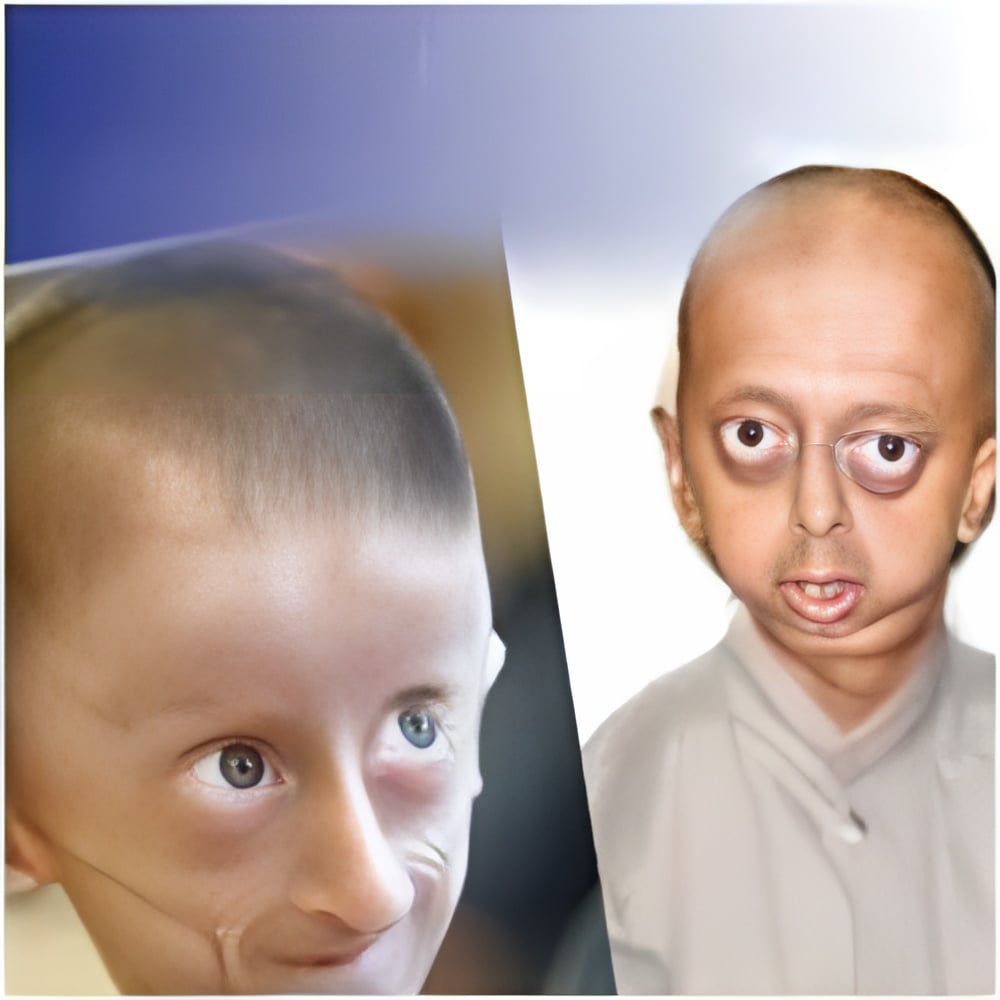
Progeroid Syndromes: Premature Aging Disorders
Progeroid syndromes are a group of rare genetic disorders that cause signs of premature aging in children and young adults, such as Werner Syndrome and Hutchinson Gilford Progeria Syndrome. Patients affected by progeroid syndromes develop symptoms and pathologies usually associated with aging, such as heart disease, cataracts, type II diabetes and osteoporosis. The target is called long interspersed nuclear element-1 (L1) RNA — a family of repeat sequences encompassing about 17-20 percent of the mammalian genome whose functions are largely unknown. These sequences are kept inactive by the tightly packed DNA architecture called heterochromatin. There is evidence that heterochromatin loss during normal aging is associated with their activation. “Based on theoretical considerations, we postulated that a molecular interaction between L1 RNA and a specific enzyme controlling heterochromatin stability could be the cause of premature aging in progeria syndromes,” says KAUST research scientist Francesco Della Valle.‘Given the similarities between Progeroid syndromes and chronological aging-associated diseases, targeting LINE-1 RNA may be an effective way to treat progeroid syndromes, as well as other age-related disease.’
Tweet it Now
Sequencing analyses, conducted by teams from KAUST and the United States, demonstrated increased expression of L1 RNA in cells taken from patients with progeroid syndromes. Further tests showed that this increased L1 RNA expression was responsible for deactivating an enzyme, called SUV39H1, which led to the heterochromatin loss and changes in gene expression that cause cell aging.
RNA Target to Treat Premature Aging
The researchers were able to block L1 RNA expression and reverse the aging process in cells taken from patients with progeroid syndromes and in mice that are genetically modified to simulate premature aging. They did this using short synthetic nucleotide chains called antisense oligonucleotides (ASO) that specifically target and lead to the degradation of L1 RNA. Their L1 ASO was modified to improve its ability to enter and stay stable within cells. Blocking L1 RNA in the cells restored heterochromatin and counteracted aging-related genes. The L1 ASOs also prolonged the life span of the progeria-like mice.Further research will need to determine whether other mechanisms, acting in parallel with SUV39H1 inhibition, might compromise heterochromatin stability in progeria syndromes.
“Among other observations, our work establishes an important rule,” says bioscientist Valerio Orlando. “Contrary to what was previously thought, aberrant expression of L1 RNA is not a consequence of the initiation of aging but a cause of it, at least in progeria. And now, for the first time, we report a specific, rather than global, target that acts as an essential factor in aging.”
Source-Eurekalert













